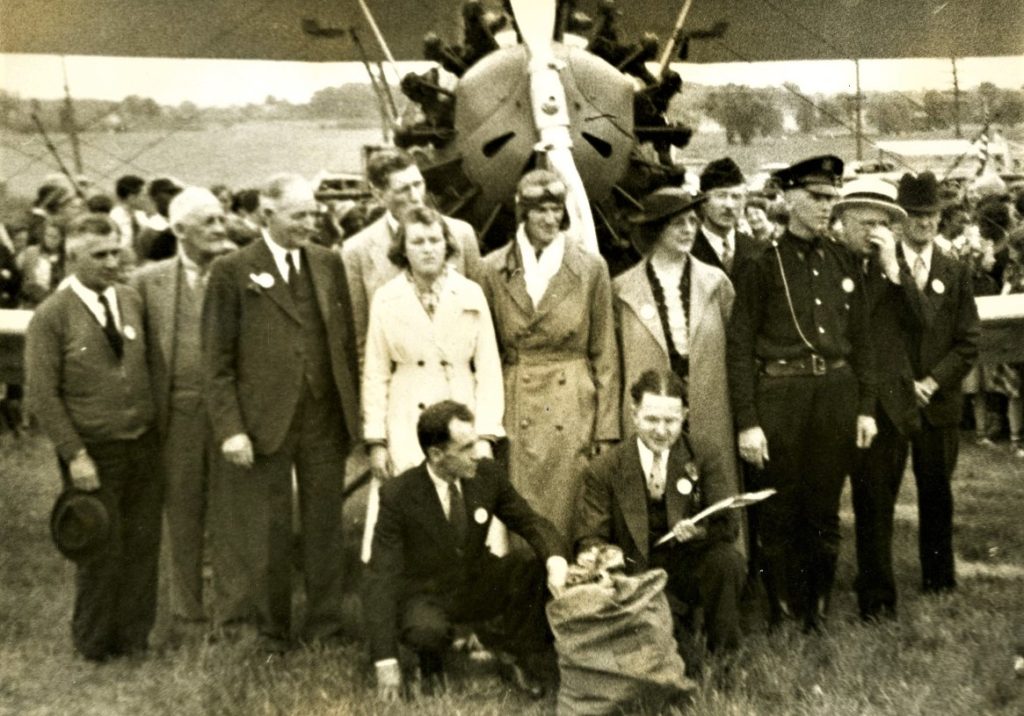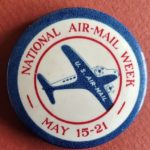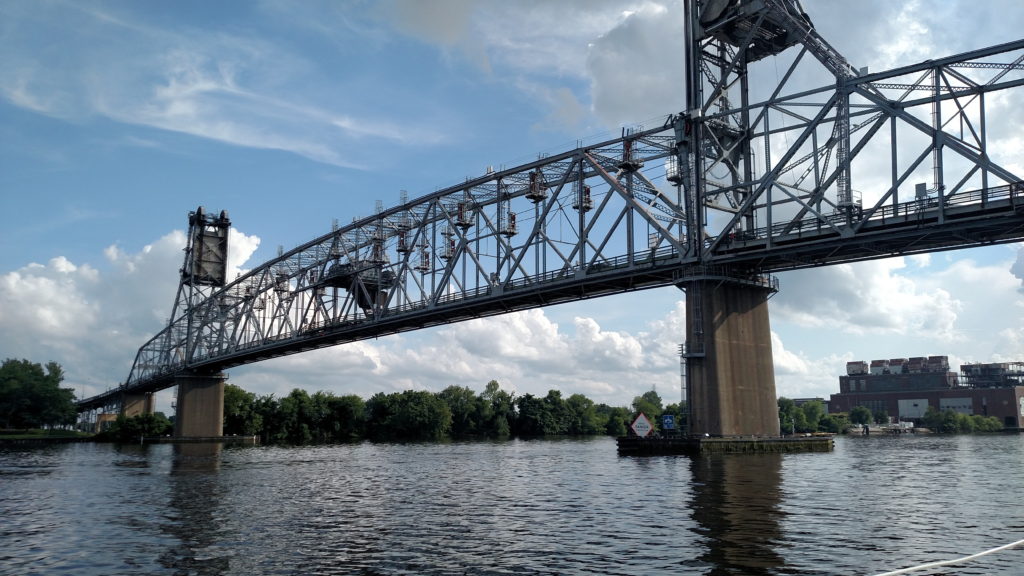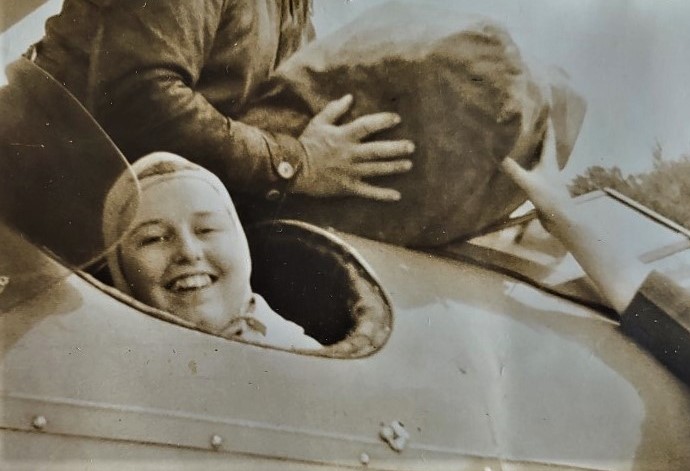The 17-year-old Langhorne girl made local aviation history in 1938.
I can identify with how Laura Jean Candy of Langhorne must have felt. When I was in 6th grade, boyhood pal Richard invited me to fly with his dad in his new Piper Cub aircraft. I was excited but with a twinge of trepidation. We took off from Fresno’s airport intent on soaring high over the Sierra Mountains. At an altitude of 3,000 feet we ran into a blizzard of insects smacking the windshield like pelting hail. The locusts forced us back for a quick landing at the airport. Whew!

Laura Jean, like me, was just as eager to fly but nervous. It was a fine Sunday morning on May 15, 1938. For the 17-year-old daughter of Langhorne’s postmaster, it would be her first flight, let alone in the open cockpit of an acrobatic biplane marking the 20th anniversary of airmail. But hey, family and friends were nudging her into the spotlight. A carnival-like atmosphere swirled as pilot William Engle notched the pre-flight check list of his single-engine aircraft parked on the edge of town at Silver Star Airport. Packed aboard would be postmarked commemorative envelopes to be flown over Bucks County.
In modern times it’s hard to envision how National Air Mail Week fired the imagination in 1938. The New York Telegraphy newspaper once predicted, “Love letters will be carried in a rose-pink aeroplane, steered by Cupid’s wings and operated by perfumed gasoline . . (and) postmen will wear wired coat tails and on their feet will be wings.” Airmail became reality on May 15, 1918 when a Curtis JN-4H successfully flew letters from Philadelphia to New York. Twenty years later the system had expanded amid all kinds of weather and calamities. Civilian pilots flew without reliable instruments and radios, using landmarks and dead reckoning to find their ways. After dark, towns lit bonfires to help mark routes. In emergencies, pilots landed in farm fields.
Sod airports sprouted in many American farm fields. In Bucks, landing strips and aircraft hangars popped up in Bensalem, Bristol, Morrisville and Langhorne where 80-acre Silver Star Airport attracted light aircraft just north of town. Airport owner and pilot Engle was about to mark the 20th anniversary of airmail with a symbolic flight over Bucks to deliver mail back to Langhorne. As a veteran test pilot, he gave Laura confidence of a safe and thrilling adventure.
Before a crush of spectators wearing commemorative buttons, the normally outgoing Laura turned taciturn. As her son David Balderston of Levittown described it last week, “This was show time; no bailing out at that point.” On the runway she posed grimly in a double-breasted coat next to a smiling Engle in a leather flying coat, white silk scarf to filter out exhaust fumes, leather helmet and goggles. Flanking both were Laura Jean’s parents. Behind loomed the nose of the aircraft. Fanning out were local dignitaries, a police officer, marching band and hundreds of onlookers with children and babies. Officials knelt in the foreground, propping up a mailbag. Inside were the self-addressed envelopes imprinted with the image of Langhorne’s Richardson House where Revolutionary War hero Marquis de Lafayette was treated for war wounds in 1777. Also the notations: “Silver Star Airport Langhorne” and “National Air Mail Week May 15-21, 1938”.

Seated behind Engle, Laura fastened her safety harness and flashed a brave smile as handlers stowed the mailbag aboard the aircraft. It roared to life, taxied away and took off over the cheering crowd. “Engle flew Mom under the Burlington-Bristol Bridge which had just opened, and then upside down,” her son recounted. It wasn’t long before the plane returned triumphant before a mob of well-wishers.
Seven years later Engle sold the airport to brother-in-law John VanSant of Bensalem. The newly-branded “Old Star Airport” paralleling Lincoln Highway hosted major acrobatic air shows attracting large crowds and goose-necking motorists. Pilot Rod Jocelyn practiced his routines there before winning the National Aerobatics Championship in 1948. VanSant often played the role of a farmer in a drunken stupor stealing an idling plane. He’d get airborne and fly erratically over the crowd in death-defying loops and dips, causing gasps down below before landing safely.
Finton Thompson and Bill Cawthorne were among local kids who hung out at the airport before VanSant sold it for the Oxford Valley Mall in the 1970s. “I often rode my bicycle over to Old Star and spent many hours watching,” recalled Thompson. As for Cawthorne, “I was the airport orphan. If Mom wanted to know where I was, she started at Old Star and asked who I was flying with.” Comings and goings of vintage aircraft always drew attention. “At any given time, people would land in an array of aviation history,” said Cawthorne. Laura Jean Candy by then had become part of that history.
***
Sources include “Airmail: A Brief History” by the U.S. Postal Service posted on the internet at https://about.usps.com/who-we-are/postal-history/airmail.pdf, and “Abandoned and Little Known Airfields Pennsylvania” on the net at http://www.airfields-freeman.com/PA/Airfields_PA_Philly_NE.htm, Also much appreciation to Larry Langhans of the Langhorne Historical Society for archival information, and David Balderston for his recollections.

